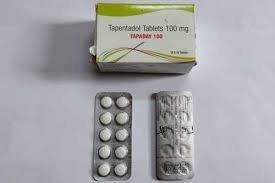How Does Tapaday (Tapentadol) 100mg Compare to Other Pain Medications?
In the world of pain management, Tapaday (Tapentadol) 100mg stands out as a promising option due to its unique dual mechanism of action that combines opioid receptor agonism and norepinephrine reuptake inhibition.

Introduction
Managing pain effectively is crucial for maintaining a good quality of life. Tapaday (Tapentadol) 100mg is a prescription pain reliever that has gained attention for its unique mechanism of action. But how does it compare to other pain medications? In this article, we will explore its effectiveness, safety profile, and potential advantages over alternative painkillers.
What is Tapaday (Tapentadol) 100mg?
Tapentadol is an opioid analgesic that provides relief for moderate to severe pain. It works through dual mechanisms:
-
Mu-opioid receptor agonism - Binding to opioid receptors to relieve pain.
-
Norepinephrine reuptake inhibition (NRI) - Enhancing norepinephrine activity, which helps in pain modulation.
How Tapaday 100mg Stands Out
Unlike traditional opioids such as morphine and oxycodone, Tapentadol has a unique dual-action approach, making it potentially more effective with fewer side effects.
Tapaday 100 mg is a prescription medication used to treat moderate to severe pain in adults. Tapaday 100mg is a brand name for the drug Tapentadol, which is used to treat moderate to severe pain in adults.
Comparing Tapentadol 100mg to Other Pain Medications
1. Tapentadol vs. Tramadol
-
Mechanism of Action: Both drugs have dual mechanisms, but Tapentadol’s opioid activity is stronger, leading to better pain control.
-
Potency: Tapentadol is approximately twice as potent as Tramadol.
-
Side Effects: Tramadol is more likely to cause nausea and dizziness, while Tapentadol has a lower risk of serotonin syndrome.
2. Tapentadol vs. Oxycodone
-
Pain Relief: Oxycodone is a stronger opioid, but it has a higher potential for abuse and dependency.
-
Side Effects: Oxycodone has a higher risk of constipation and respiratory depression.
-
Safety: Tapentadol has a lower abuse potential than oxycodone due to its mechanism of action.
3. Tapentadol vs. Morphine
-
Efficacy: Morphine is a gold standard for severe pain, but Tapentadol has comparable effectiveness for certain types of pain.
-
Tolerance and Dependency: Morphine has a higher risk of tolerance buildup and withdrawal symptoms.
-
Gastrointestinal Effects: Tapentadol causes less constipation than morphine.
4. Tapentadol vs. Hydrocodone
-
Strength: Hydrocodone is commonly prescribed for moderate to severe pain, but Tapentadol provides similar relief with potentially fewer opioid-related side effects.
-
Combination with Acetaminophen: Hydrocodone is often combined with acetaminophen, increasing the risk of liver damage with prolonged use.
5. Tapentadol vs. Non-Opioid Pain Medications
-
NSAIDs (Ibuprofen, Naproxen): These are effective for mild to moderate pain but lack the potency needed for severe pain.
-
Acetaminophen: Works well for fever and mild pain but is not sufficient for severe conditions.
-
Gabapentinoids (Gabapentin, Pregabalin): These are used for nerve pain, but Tapentadol is more versatile for different types of pain.
Effectiveness in Chronic Pain Conditions
Tapentadol is especially beneficial for neuropathic pain, diabetic neuropathy, and osteoarthritis. Unlike many traditional opioids, it has shown promising results with fewer cognitive side effects.
Safety Profile and Side Effects
Common Side Effects:
-
Dizziness
-
Nausea
-
Constipation
-
Headache
Serious Side Effects:
-
Respiratory depression (less frequent than with oxycodone or morphine)
-
Dependence and withdrawal symptoms (lower potential than other opioids)
Abuse Potential and Risk of Addiction
While Tapentadol is an opioid, its unique action reduces its abuse potential compared to stronger opioids like oxycodone and fentanyl. However, it still carries a risk of dependency with prolonged use.
Dosage and Administration
-
Standard Dose: 50mg to 100mg every 4 to 6 hours as needed for pain.
-
Extended-Release Option: Available for chronic pain management.
-
Adjustment: Patients with liver or kidney impairment require dosage modifications.
Who Should Avoid Tapentadol?
Tapentadol is not suitable for:
-
Patients with severe respiratory depression.
-
Those with a history of opioid addiction.
-
Individuals with liver or kidney dysfunction.
-
Pregnant or breastfeeding women (consultation required).
Conclusion
Tapaday (Tapentadol) 100mg is a valuable option for managing moderate to severe pain. It offers a unique mechanism that makes it effective with potentially fewer opioid-related side effects. While it is not as strong as oxycodone or morphine, its balanced approach to pain relief and lower abuse potential make it a preferable choice for many patients.
What's Your Reaction?










